 Anyone past the age of 30 should start to incorporate strength training into their fitness routine. However, after the age of 50, strength training takes on even more significance.
Anyone past the age of 30 should start to incorporate strength training into their fitness routine. However, after the age of 50, strength training takes on even more significance.
At this point, if we haven’t been training, we’ve already lost about 10% of our muscle mass, and maybe more. That loss of muscle mass begins some time in our late 30s to early forties.
Furthermore, some of us, particularly women, are more prone to loss of bone density.
Therefore, it we want to maintain a decent quality of life into our advancing years, we must include strength training in our overall fitness program.
Here are some of the benefits of strength training.
Increased Metabolism
One of the most important benefits of lifting weights is that you will turn your body into a fat burning machine through building muscle.
Lean muscle mass burns more calories throughout the day. Therefore, while you burn calories during your workout itself, you’ll continue to burn more calories throughout the day since muscle requires more energy to maintain.
What is particularly beneficial is that you’ll lose more deep belly fat, the fat that surrounds your organs around your belly, than you would if you just did cardio.
As a result, you’ll gain a significant health benefit, as those fatty deposits around your organs can impede their function.
Improved Strength
Naturally, if you lift weights regularly, you are going to gain strength. Increased strength will benefit you in your everyday activities, such as carrying groceries, moving furniture, doing yard work, etc.
If you participate in any type of sport, improved strength will also be of benefit.
One example I like to cite is professional golfer Bryson DeChambeau.
A few years ago, DeChambeau decided he wanted to add distance off the tee. At the time, he was already a long hitter, with an average swing speed over 119 mph (average tour speed is currently about 113 mph).
Within a couple of years he was up over 130 mph, and actually finished 2nd in the 2022 World Long Drive Championship, unheard of for a tour pro.
Improved Mobility
 Lifting weights, particularly with movements involving compound exercises, will also improve your overall mobility.
Lifting weights, particularly with movements involving compound exercises, will also improve your overall mobility.
Compound movements such as the squat and dead lift incorporate a number of muscle groups, along with the tendons and ligaments that provide support to those muscle groups.
As a result, you gain improved mobility as a result of these lifts, which is clearly beneficial as we age.
This improved mobility will help us get around the house and yard, and in public, and this helps us lead a healthier lifestyle.
Improved Bone Density
Lifting weights will help improve or at least maintain your bone density.
As we age, we tend to lose bone density and this is what leads to easy fractures due to falls. Women in particular are at risk.
At an advanced age, a fall that breaks a hip is often a sign that significant issues will be coming down the road. It’s not uncommon for life expectancy to be reduced significantly after such an injury.
Strongman Brian Shaw is an extreme example of the improved bone density resulting from lifting weights. He lifts very heavy things for a living. As a result, when he went in for a Dexascan in 2021, the technicians told him his bone density was the highest they had ever measured.
Improved heart health
Cardio exercise is not the only form of exercise that will improve your heart condition. Another one of the important benefits of strength training is improved heart health.
In one study performed at Appalachian State University, people who performed 45 minutes of moderate strength training lowered their blood pressure by 20 points.
This is significant, because that is a better result than you would get from some medications.
Once you start training, and the weight gets heavy, you will be amazed at how you will be huffing and puffing from a set of 5 squats.
You’ll look and feel better
 Who do you think looks more attractive… the marathon runner who does nothing but run long distance, or the sprinter, who incorporates lifting weights into their training program?
Who do you think looks more attractive… the marathon runner who does nothing but run long distance, or the sprinter, who incorporates lifting weights into their training program?
Opinions vary, but I would venture to guess that most people would find that the sprinter has a more appealing physique due to the muscle mass and tone.
You be the judge. Have a look at the photos of Ryan Hall, former marathon runner. On the left is when he competed. On the right is after he added 60 pounds of muscle.
Improved confidence
Lifting weights improves your confidence in a couple of ways.
First, as mentioned, your physique will improve. Looking better in the mirror is a natural confidence boost.
The improved strength and mobility that comes along with lifting weights will also boost your confidence.
When you are able to perform everyday activities and your favorite activities at a higher level, you’ll naturally feel better about yourself, and that improved confidence will show up in your relationships and at work.
Principles of Strength Training
 Many people who are not familiar with legitimate strength training will often confuse “exercise” with strength training.
Many people who are not familiar with legitimate strength training will often confuse “exercise” with strength training.
Exercises that they will be told are strength training exercises may involve doing curls with those little orange or pink dumbbells, kettlebell exercises, push ups, sit ups, etc.
Yes, if you are completely untrained, you will get stronger by performing such exercises.
However, you will NOT get strong.
Legitimate strength training involves basic compound movements that mimic natural human movement patterns. These compound movements are performed with barbells.
Training these exercises with barbells will allow you to improve your strength faster than with any other exercises because they can be loaded with more weight.
For instance, you will improve your leg strength much faster by training the barbell squat than with leg extensions. The squat incorporates far more muscle mass and can ultimately be loaded with far more weight.
Unfortunately, most of the personal training and medical community advises trainees over 50 against training these exercises.
This is mainly due to ignorance and lack of knowledge on how to coach the movements so that the trainee can avoid injury.
Jonathon Sullivan is a medical doctor who now specializes in training people over the age of 50 to get strong through the use of barbell training. Along with Andy Baker, he wrote “The Barbell Prescription” and he has clients as old as 94 that he trains at his Greysteel practice in Michigan.
Even if you have some sort of restricted movement due to an old injury, or perhaps arthritis, you can still likely train at least one or two of the primary compound movements.
The percentage of people who should avoid a particular exercise is actually pretty low. I personally have had a low back issue for nearly 20 years, and prior to learning how to properly squat and deadlift, those exercises have caused me pain.
And while every now and then I may tweak my back, I’ve learned to understand when it is appropriate for me to train these exercises, and when I should take a short break from them.
With this in mind, do not just avoid these exercises because you are afraid of injury. This is why we start with low weight so we can learn the proper form.
Anyhow, the four main compound exercises include:
- Barbell Squat
- Deadlift
- Bench Press
- Overhead Barbell Press
All these movements involve multiple muscle groups and joints, and therefore, involve far more muscle tissue compared to such exercises as dumbbell curls.
That is why performing these exercises with proper programming will allow you to build the most amount of strength over the shortest amount of time.
With that said, the squat, deadlift and overhead press are technical lifts that may require you to get some coaching to be sure to help you understand how to perform them.
Check out some equipment you will need to get started if you don’t intend to go to a gym.
Let’s have a look at each of these exercises in a little more detail.
The Big Four Compound Lifts
Deadlift
 The one core exercise you need if you want to build muscle mass is the dead lift. For a single movement exercise, it trains more muscle groups than any other.
The one core exercise you need if you want to build muscle mass is the dead lift. For a single movement exercise, it trains more muscle groups than any other.
The dead lift works the quadriceps, hamstrings, glutes, lower back, abdominals, shoulders, lats, trapezius, and the forearms.
The deadlift is the one exercise that allows you to lift the most weight. At present, the world record for a deadlift is just over 1,100 pounds.
It is also the one exercise where you can progress the fastest in regard to adding weight to the bar during the initial stages of training.
Because it works both the upper and lower body, it is virtually a must exercise to include in any strength training program.
Very few people who are able to train are unable to do the deadlift (I am one of those people who struggles with the deadlift due to a spinal issue).
In fact, a couple years ago, a 100 year old woman in Florida deadlifted 165 pounds. Even more amazing is that she didn’t start training until she was 91.
If you do have back issues like I do, then be conservative with training this exercise. Start at a conservative weight, slowly add weight over time, and see how it goes.
If the exercise causes you problems, then eliminate it. That will be the case with all exercises. The goal is to train however possible, not be too injured to train.
Squat
While the deadlift involves more muscle groups, the squat actually engages more muscle mass through the greatest range of motion, when done correctly.
The squat works virtually the entire posterior chain, from the calves all the way up to the upper back.
As a result, powerlifters who specialize in the squat are able to handle upwards of 900 pounds.
For building pure strength, the Squat is actually the king of exercises, while the Deadlift is arguably the queen.
In fact, by regularly training the squat, you will drive gains in your deadlift.
In most strength training programs, the squat is viewed as the most important exercise, and it is also often trained in these programs more than the other exercises.
Similar to the deadlift, you can also add weight to the bar fairly quickly with the squat.
However, technically, it can be a more challenging lift, and it can be difficult for people with back or knee issues.
Also, the low bar version that I recommend can be difficult for people with some limited shoulder mobility, or elbow issues. Count me among them, so I’ve recently switched to using a Safety Squat Bar.
If it all possible, try to incorporate the squat into your program.
Bench Press
The bench press is the exercise that allows you to develop the greatest upper body strength. Power lifters who specialize in this lift are able to bench upwards of 800 pounds.
When performed properly, the bench press can incorporate significant leverage, which is why you are able to push up significantly more weight than with the barbell press.
As such, it is a movement that allows you to build significant strength and muscle mass in the upper body. The bench press works the muscles of the chest, upper back, front of shoulders, and triceps.
The forearms also get some work from holding the barbell.
Overhead Barbell Press
The overhead barbell press is the most technical of the lifts discussed here. It is also the one exercise where your progress in regard to adding weight to the bar will stall most quickly.
While the primary muscle group employed in this lift is the shoulders, since it is done standing, it also engages many muscles from the feet all the way out through the forearms.
Because of its difficulty, many non-competitive lifters simply choose to do seated presses with barbells or dumbbells.
This is acceptable, as long as you are at least incorporating the squat and deadlift into your training.
Remember, the goal with these lifts is overall strength, and that is built with as much range of motion as possible.
Novice Linear Progression
Parts of the following discussion are derived from The Barbell Prescription, which I mentioned earlier.
Most people who work out at home or at a gym are simply exercising and not training.
While they may exercise for years, they don’t get particularly strong, and they are barely holding off the aging process that leads to weaker muscles and bones, and decreased mobility.
To build strength, we want to exploit the Stress-Recovery-Adaptation cycle. By holding the volume and exercise selection constant, and adding weight to the bar each workout, a Novice will display an increase in strength EVERY WORKOUT for a period of time.
A linear progression occurs when a trainee is capable of sustaining consistent increases in workload in successive training sessions for a period of time. This period of time is typically about four to six months.
Depending upon your age, this may mean training two or three days per week, with at least a day in between workouts.
Training one day, appropriate rest until your next workout, and then loading the bar with more weight for the next workout exemplifies the Stress-Recovery-Adaptation cycle in its simplest form.
In my experience, to get the most out of this linear progression, you need to start out VERY conservatively with your weights.
The first couple of weeks should require almost minimal effort, as your focus is primarily on perfecting the movements while adding some weight to the bar for each workout.
Sets and Reps
To build strength, we need to expose our body to intensity, or heavy weight. As a result, we tend to train with fewer reps.
Starting out, our focus is on five reps.
Here’s why…
Consider the two ends of the spectrum when it comes to training.
At the low end is 1 rep, and at the high end, we’ll use 20 reps. 20 reps is often employed by the bodybuilding community, which is focused on muscle hypertrophy.
Powerlifters train to have the ability to lift a maximum weight for a single rep. This is effectively just a performance.
A true one rep maximum weight will likely require so much effort, that the rep may take 5 to 7 seconds to complete.
After completing that rep, it will be impossible to immediately complete a second rep at that weight.
At the other end of the spectrum is the 20 reps.
Now, after you’ve completed 20 reps, chances are, if you take a couple deep breaths, you can squeeze out another rep or two.
At this point, it is no longer maximum force production at work, but muscle endurance.
In between this rep range is a number that will result in the following training adaptations:
- Increased strength
- Increased muscle mass
- Improved conditioning
That rep range is right around five reps.
After you’ve been training for a couple months and the weight on the bar has increased quite a bit, you will find that pushing out the fifth rep will be quite difficult.
It may take you a few seconds to complete the rep, and once done, you will be huffing and puffing.
This is particularly the case with the squat and deadlift, since there is so much muscle mass involved.
In general, novice lifters will make significant gains in strength over the span of a few months simply by performing THREE working sets of FIVE reps.
The lone exception is that we initially only train one working set of five reps on the deadlift, since it puts more stress on the nervous system than the other lifts, due to the weight on the bar and the number of muscle groups involved in the lift.
Intermediate Training
Eventually, performing three working sets of five reps will prove to be too difficult because we’ve added considerable weight to the bar over a fairly short period of time.
This usually happens first with the overhead press, because that is the most difficult lift, and it is the lift in which we will ultimately lift the least amount of weight.
What happens is that we start to fail on the fifth rep in set three, and then we start missing the fifth rep on the very first rep.
This is when we start to make minor adjustments to our training.
For instance, if we miss that fifth rep in set three for the first time, the best thing to do is simply weight a minute, then get back in there and complete that last rep.
Eventually, we’ll be unable to even complete four reps since the weight on the bar has increased so much.
Therefore, for a couple weeks, we may still be able to continue adding weight to the bar, but we’ll do five sets of three reps.
Once we start missing rep three, then we’ve effectively reached the end of the novice progression for the press.
This may also be the case with the bench press. And then we simply move on to intermediate type programming.
Intermediate programming typically involves combining heavy training days and light training days, or even a heavy-light-medium program, where you train heaviest on Monday, give yourself a bit of a break on Wednesday, then train at an intensity level somewhere in between on Friday.
At this point, we may also be adding more volume, such as five sets of five reps. This is usually done on the heavy day.
For older lifters, this type of programming may prove ineffective, as it simply becomes too difficult to recover.
Older lifters tend to become, as Dr. Sullivan suggests, intensity dependent and volume sensitive.
In other words, in order to maintain their strength levels after getting through the Novice Linear Progression, older lifters still require exposure to heavy weight, but with fewer sets during the week.
The Basic Novice Program
The trainee who is starting off their training for the first time ever, or after a significant period of time has elapsed since they previously trained, starts with a very basic program that trains three days per week.
This program is the core of the Starting Strength program made popular by Mark Rippetoe.
You will want to set up on a schedule that gives you at least one day of rest between workouts, such as Monday, Wednesday and Friday.
Older Trainees over 60, after a couple months, may then want to switch to a two day per week schedule, such as Monday and Thursday, as it becomes more difficult to recover between workouts.
This initial program consists of two basic workouts as follows:
Workout A Workout B
Barbell Squat Barbell Squat
Bench Press Overhead Press
Deadlift Deadlift
The recommended type of barbell squat is what we refer to as the low bar squat. The low bar squat has the bar sitting just below the upper trap muscles, rather than on top of the shoulders.
Head on over to this page and scroll down to see videos from the Starting Strength Youtube channel that demonstrate how perform these lifts.
As part of this training, I’ve included video tutorials for all of these lifts from the Starting Strength Youtube channel.
Note: The low bar squat requires flexibility in the shoulders, and can put pressure on the elbows. The high bar squat is a suitable alternative (this is where the bar rests on top of the shoulders). If this also creates problems for your shoulders and/or elbows, a safety squat bar may be warranted.
Sets and Reps
For the squat, bench press and overhead press, we want to perform three working sets of five reps.
For the deadlift, we will only want to do one working set of five reps.
Before we do any working sets, we want to warm up first.
I recommend getting the body warm by jogging in place and doing some jumping jacks for a couple minutes, followed by some light stretching.
With each of the lifting exercises, we then want to perform a few warm up sets with a focus on our form, before getting to the working sets.
Sample Workout – Bench Press
Set 1 – Empty Bar – 10 reps with focus on form
Set 2 – 100 pounds – 5 reps
Set 3 – 115 pounds – 3 reps
Set 4 – 135 pounds – 1 rep
Set 5 – 145 pounds – 1 rep
Set 6 – 155 pounds – 1 rep
Sets 7-9 – 175 pounds – 5 reps
For the warm up sets, you only rest for the time it takes to change the weight on the bar. For the three working sets, you will rest for about 2 to 3 minutes.
If you start out very conservatively with your weights, then 2 minutes is all you should need.
Sample Workout – Deadlift
Set 1 – 135 pounds – 5 reps
Set 2 – 155 pounds – 3 reps
Set 3 – 175 pounds – 1 rep
Set 4 – 195 pounds – 1 rep
Set 5 – 205 pounds – 1 rep
Set 6 – 225 pounds – 5 reps
Note – It is critical that you start out very conservatively, otherwise, you will stop progressing too quickly. Do not get greedy and start adding too much weight to the bar for each workout… stick with five pounds.
Just to provide you an example, if you somehow learn that the maximum weight you can bench press five reps is 150 pounds, then you will still want to start out at about 110 to 120 pounds.
For the first couple of weeks, you should be able to easily complete 5 reps for 3 sets for each exercise, adding weight to the bar with each workout.
Adding Weight
In the first week or two, you may be able to add 10 pounds to the squat and deadlift with each workout. This assumes you start out with conservative weights.
After that, you will add 5 pounds to the bar, and no more (if you are a trainee over 60, or a female trainee who is quite petite, you may only be able to add 2 or 3 pounds to the bench press and overhead press, and that is perfectly fine).
Your body will be able to adapt to the new weight fairly easily in the initial phases, provided you start out at a conservative weight.
Off Days
This program is for people interested in developing significant strength in the near term.
With that in mind, on the days in between strength training workouts, “active rest” is what is generally prescribed.
Therefore, while you are focused on building strength, just go through your normal routine, unless that means you are completely inactive.
At the very least, go for a walk, do some yard work, etc.
If you are considerably overweight, consider including some cardio in your training.
First Adjustment
Because the deadlift can get quite heavy very quickly, it really starts to cause stress for the body.
Therefore, after about 2 to 4 weeks, the first adjustment to the programming is to alternate the deadlift with another pulling exercise.
For our purposes, that exercise is the chin up or lat pulldown with palms facing in.
If you are unable to perform at least five chin ups, then you will want to employ the lat pulldown.
The program now looks like this over a two week period:
Week 1
Monday Wednesday Friday
Squat Squat Squat
Bench Press Bench
Deadlift Chins/Pulldown Deadlift
Week 2
Monday Wednesday Friday
Squat Squat Squat
Press Bench Press
Chins/Pulldown Deadlift Chins/Pulldown
If you will do chin ups with these workouts, you do 3 sets, as many reps as possible, while resting 3 minutes between sets.
If you will do lat pulldowns, you will do 3 sets of ten reps, starting at a weight where this is easy and you need no more than 2 minutes rest between sets. You’ll then want to try and add weight each workout (remember to start with a conservative weight).
The goal is to eventually switch over to chin ups rather than lat pulldowns.
If you are able to do three sets of ten chin ups, then you’ll want to start adding weight.
And that is how the basic Novice program will look for the first 2 to 3 months of training.
Final Thoughts – Principles of Strength Training
You now have the beginnings of a legitimate strength training program that will help you add considerable strength over a few short months.
Once you get beyond those first few months, programming changes will be needed to help you continue to make steady progress.
Eventually, the training will get very hard, and you will find it impossible to add weight to the bar every workout.
That is when the programming will become more complex, and then you can also choose to modify your overall fitness program depending upon your ultimate goals.
Consistency is the key. If you are able to maintain this schedule throughout the year, you will see significant improvement in your strength and in your appearance.
Obviously, some issues can get in the way of a workout. However, now is the time to make your fitness a high priority, so do not let everyday nuisances get in the way of your training.
Sickness, vacations, family emergencies are obviously going to keep you from training.
A word on vacations… some fanatics will seek out a gym to work out during a vacation.
It’s up to you, but vacations are meant for re-charging our batteries, both mentally and physically.
Stay active during your vacation, and do some push ups, some lunges and maybe a plank or two if you feel the need.
If it is a long vacation, then perhaps seek out a gym where you can get in a few sets for maintenance.
When you get back to the gym at home, don’t start where you left off… back off about 5% or 10% on your weights, and then work back up. You’ll be making new gains in no time!
Lastly… and this is a critical point. If you have never trained, or it’s been a long time, consider getting coaching on the four main lifts… squat, deadlift, bench press and barbell press.
Proper form is crucial with any exercise, but particularly these exercises as you will eventually be handling the most weight with them.
The purpose of training is to get strong and durable. The last thing we want to do is injure ourselves in the gym.
Now get to work!
Discover more from Scott Allan Cole
Subscribe to get the latest posts sent to your email.
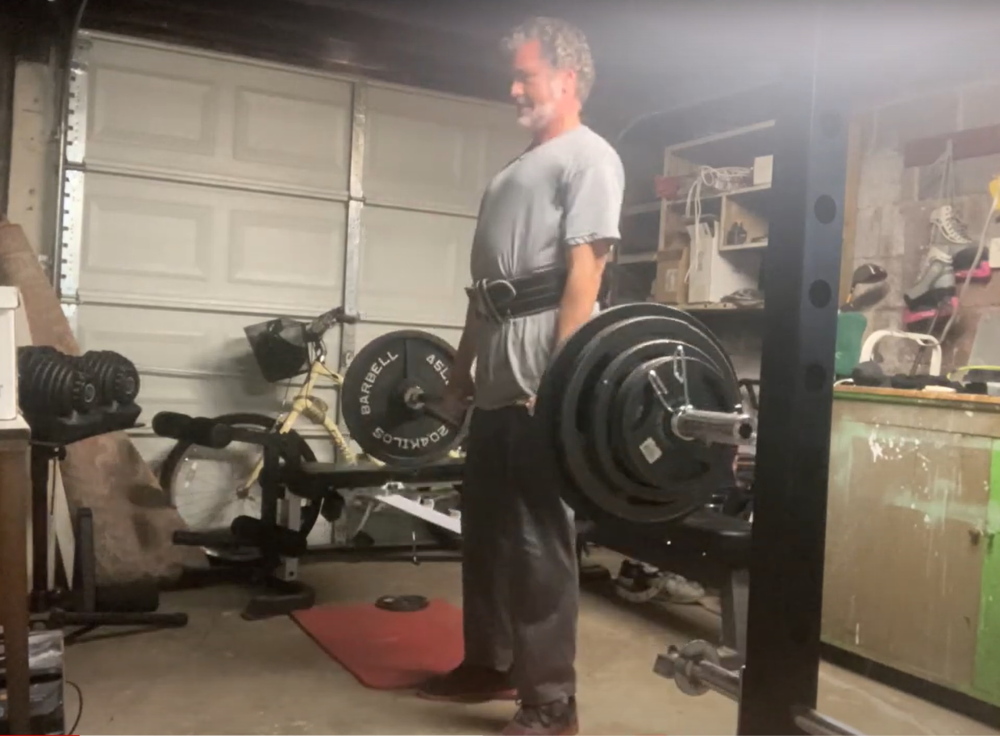

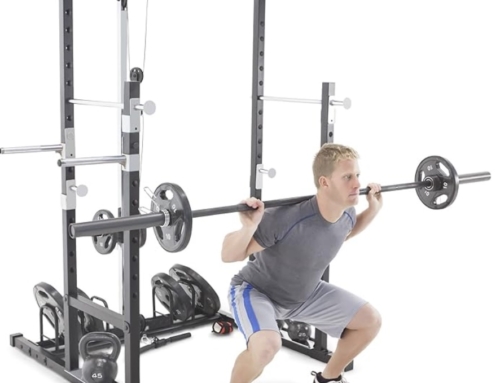
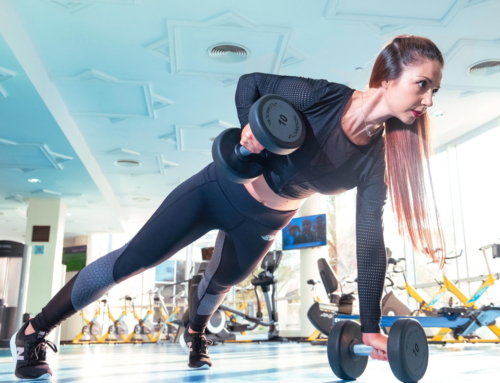
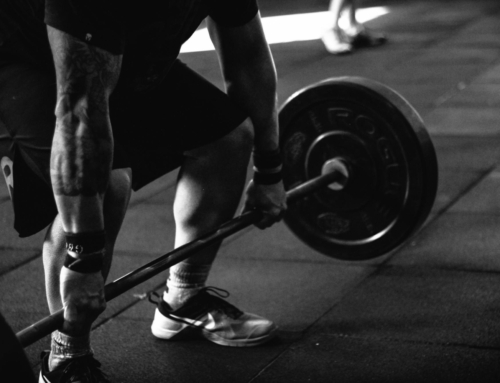

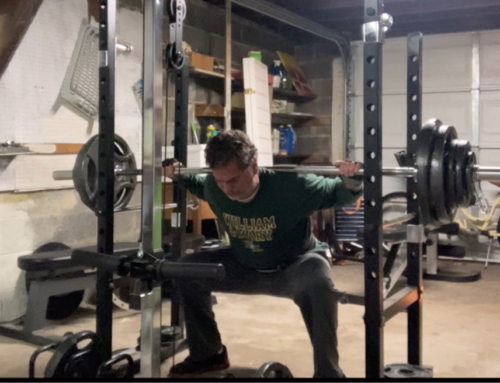
Leave A Comment